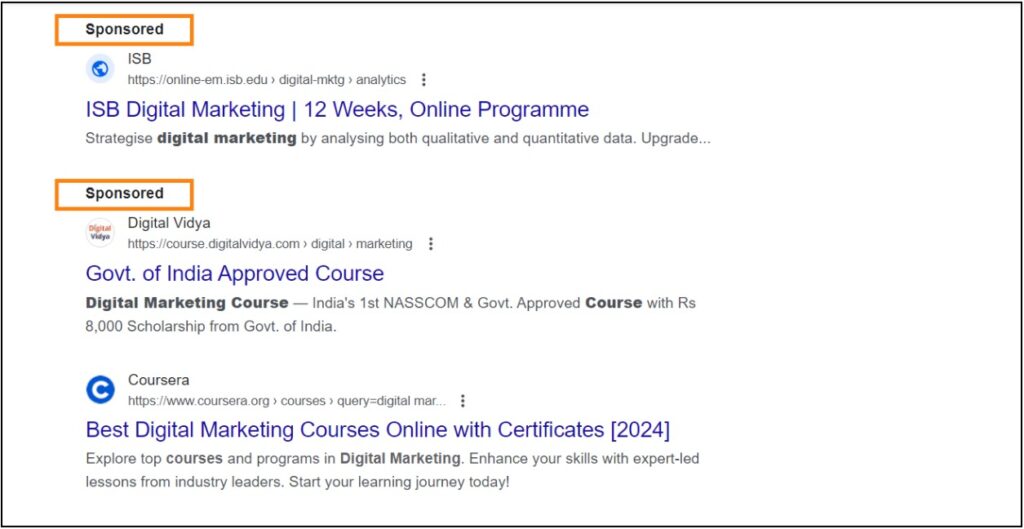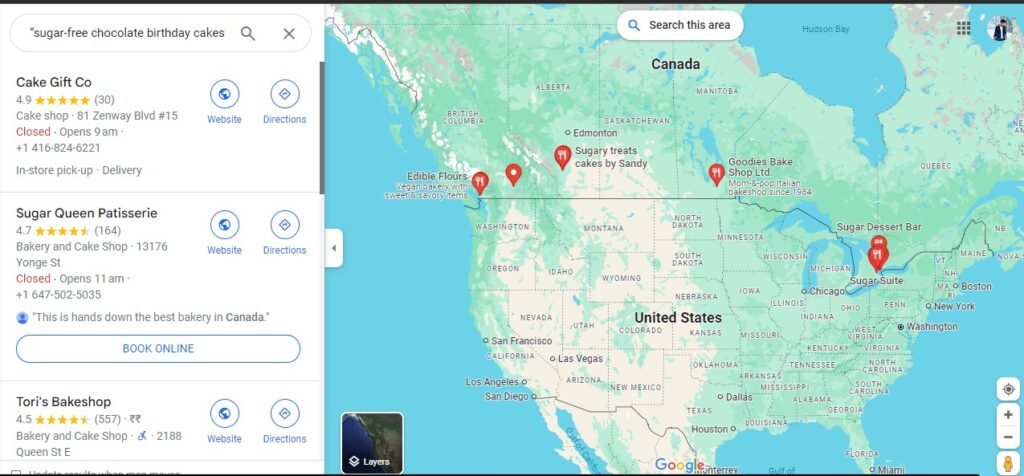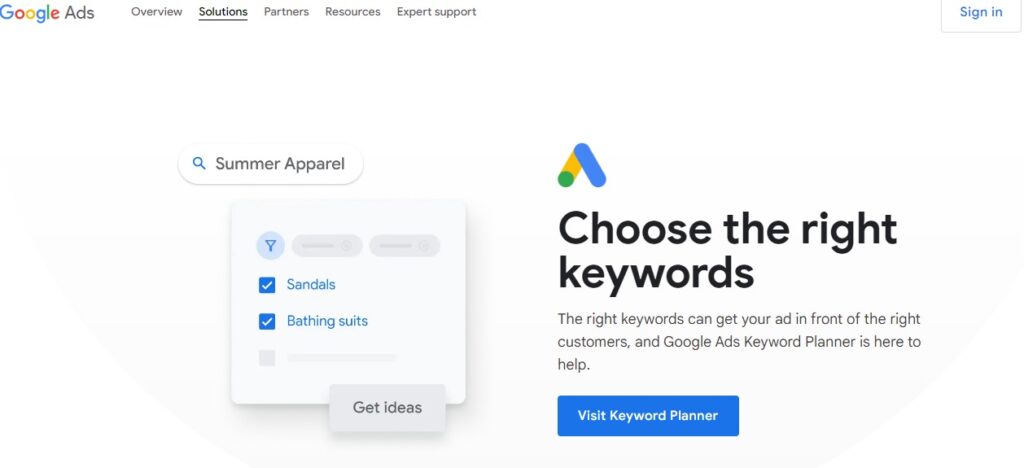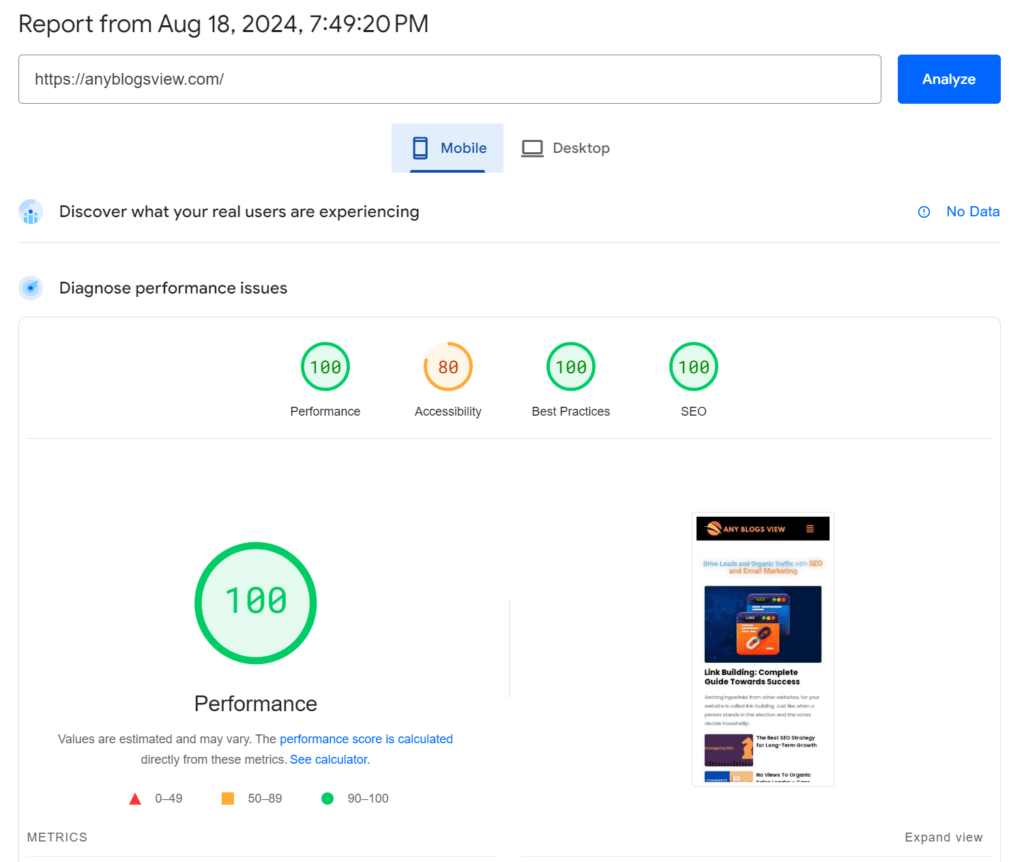Table of Contents
ToggleSEO competitor analysis is examining what your competitors are doing to rank well on search engines and using that information to improve your own strategy.
SEO is always changing and upgrading- one blink and it’s all new again! Given the time, it’s important to stay ahead of others – it is crucial now to succeed. But just think of whether you’re a beginner or anyone who hasn’t achieved great traffic, or conversion, or if you’re just starting out – how can you stand out?
Even if you’re an established website or brand, there’s still much hunger to be at the top, how will it happen? SEO Competitor Analysis. Yes, that’s the answer. As said, your enemies (or say, competitors) are your biggest way to grow. Let’s make it come true!
Through SEO competitor analysis, one can get hold of the strategies that work, get valuable insights, and outrank; without even putting in the effort to apply it all yourself and experience the loss or downfall. In this blog, we’ll take you through every aspect of SEO competitor analysis in a way that’s easy to understand and apply.
Who Are The SEO Competitors?
Before we focus on the term “SEO Competitor”, what do you think competitor means? Someone who’s ahead of you; the one of whom you’re behind. But, they can be surpassed if you know their ways of winning and advancing in them.
The same happens when we come across SEO competitors. This time, you’re not competing with a human but, your website’s competing with the other website, trying to outrank them and succeed. They are the ones who target the same keywords, same traffic, and have the same goals as you but, ahead of you by just some strategies.

While we’ve said all of it, one question might arise from somewhere- who are they? How can I find my SEO competitors? We’re here to answer it all!
But before you go for any of them, be prepared with the keywords for which you want to find your competitors. Detailed keyword research can greatly help you find the right websites from which to observe strategies.
Google Search: The Simplest Action
This is the easiest way you’d ever come across to find your SEO competitors. On top of that, this is free and can be done by a beginner as well. Excited to know?
Just open the Google App, enter the keyword in the search box, and hit search! Suppose, the keyword we want to search our competitors is “backlink building guide”; it’ll look like this

Note: The results might vary as they are personalized by Google according to the user’s search history and preferences. To get non-personalized results, you can create unique search URLs yourself and avoid it! Here’s what we mean by it –
https://www.google.com/search?q=example+query&pws=0&gl=gb&hl=en
Let us show you what the different letters in this URL mean.
| Element | Meaning |
| q=example+query | Example Query that you’re searching for |
| pws=0 | This is to disable personalization |
| gl=gb | This is to search as if you’re in a different country such as the UK |
| hl=en | This is to search on the browser making the medium of communication in the English language |
So now, if I have to search for “backlink building guide where Google doesn’t personalize the result, I’ll type this in the search bar to get the results –
https://www.google.com/search?q=backlink+building+guide&pws=0&gl=gb&gl=en

Now that we’re done with the URLs, when you get to the SERP or Search Engine Result Page, the top 10 websites are your competitors who you need to outrank (excluding websites with sponsored or ad tags as Google has been paid to advertise them).

A Secret Tip! To get the most relevant results, analyze the domain authority to get to know their ranking strength. One can do this easily by using an SEO tool that can help you let know of the DA. The DA score ranges between 1 to 100.
The more the score is, the more information you get. This helps you understand how and why they are outranking you.
“Related:”- Google Search Operator
There’s one more way to find your SEO competitors through Google. This takes less time and doesn’t need you to input a keyword in the search box. The way is to perform a search and use the search operator “related:” and type your website’s URL next to it.
This search operator helps you know the websites that are similar to yours and can be labeled as your competitors.
Type- related:https://www.example.com (replace https://www.example.com with your website’s URL)
Keep In Mind: This Search Operator might not work for some websites in certain industries as these are best for mostly large websites to quickly find who’s competing with them.
Google Maps
If you’re an owner of a local business and want to find who’s your competitor locally, Google Maps makes it easier to find them.
- Open Google Maps
- Type “keyword” + Location
That’s it! You’ll see who are your competitors.
Suppose you’re a bakery that makes “sugar-free chocolate birthday cakes” and you’re in Canada. The Term in the search box would look like-
“Sugar-Free Chocolate Birthday Cakes” + Canada (you can change the location to a more specific place; the actual address)
And the result would be

Zoom in the map to shrink the competitors’ results and find who’s more relevant to you.
Paid SEO Tools
There are many paid SEO tools available on the internet. They all have a competitors finding tool where you can type in the keyword, or your website – as the SEO tools direct you to input – to find who your competitors are.
You might also get additional information through them like, domain authority, their ranking keywords as well and traffic brought by those keywords. To put a cherry on top, some SEO tools may also provide a trial period or free limited search options.
Once you’ve got the list of your competitors, it’s time to understand and analyze their SEO strategies!
My personal recommendations are Semrush and Ahrefs.
Collecting Competitors’ Ranking Keywords
The best way to get noticed is always using keywords on the website you want to be found for. The same goes for others. All those who have a website use some keywords throughout their website and content to rank for – your competitors do it as well to attract organic traffic.
Have you thought if you’re missing out on keywords that your competitors are covering and ranking for? That can be the genuine reason for your staying behind.
But, why do I need to find my competitors’ keywords, or, what would I even do with them?
- Take them and use them in a better way to compete and outrank the competitors.
- Target those keywords that haven’t been used by my competitors yet.
- Find out the long-tail keywords that I couldn’t think of earlier.
- Find how and why the competitors’ website is ranking above you for a keyword that you use as well.
Makes sense? Let’s find out the keywords your competitors use. We’ll discuss 5 tools that can help us do the same –
Google Keyword Planner

Do you have a free Google account? Obviously, you’ll have one! And, this takes you a step closer to it.
Just log in to the Google Keyword Planner Tool and tap on the “find new keywords” option. Now, click on “Search for new keywords using a phrase, website, or category”. After opening, you’ll see a text field under “your landing page” where you need to enter the URL or your competitor’s website and select “Get Ideas”
Google will crawl to that URL and give you a list of all the keywords that the website uses and those related to the web page. When you get the results, tap on the “keyword ideas” tab that will be below the graph. After this, you’ll be able to see the keywords of your competitor’s website.
This is the ultimate and free way of finding your competitors’ keywords. After this, you can do your own research on those keywords and use them in your content to rank.
Paid SEO Tools
There are many SEO tools available online. Some of the famous tools are SEMrush, Ahrefs Keyword Explorer Moz Keyword Difficulty, And SERP Analysis Tool. These are paid SEO tools but provide limited free competitor keyword research.
These platforms have competitor tools where one can find the keywords of any domain. You just need to put in the URL of your competitor’s website and get the list of all the keywords without any waiting period.
Adding to it, it also shows the URLs that are ranking for each keyword your competitor uses, its difficulty, volume as well as traffic attracted by it.
HTML Page Source Of Your Competitor’s Website
This is something that many websites don’t use but, what’s wrong with just checking once? Let’s skip to the steps! (This can be a time-consuming process)
- Open browser
- Visit your competitor’s website and choose a webpage you want to find keywords on
- Right-click on the same page and tap on “view page source”
- You’ll see a window with the HTML source code of the same page
- There, you need to look in the code for the keywords that are used in the title tag, meta descriptions, and any other keywords used in keyword tags, image tags, or alt tags
This is a time-consuming process to perform as the last way to find keywords from your competitors’ websites. You can skip it as well.
After finding out the keywords, move ahead and find out the traffic for each keyword and rank your competitors for those keywords through SEO tools.
Analyzing the keywords will provide valuable insights and help you decide the one you should use on your website to actually go ahead and get a lot of organic traffic to outrank them.
Understanding The Content Of Your Competitors’ Website
Content? Keyword was fine but why content? – you might be thinking this at this moment.
Analyzing competitors’ content and understanding their tone, style, and content strategy can help you in upgrading your content game and boost your website’s performance with tested tactics.
It has many benefits, most importantly when you’re new or stuck in the middle website; You get to know where you stand and you can even find out the content gaps and areas that need improvement. You get an already-made path to success without swinging from trial to error, error to improvement, improvement to perfection and this continues to infinity.
Analyzing competitors’ content includes 6 steps – or 6 milestones.
Finding Your Competitors (There’s More To It)
The first step is always to identify your competitors, which we’ve already achieved even before starting. But, do you want to know more? We’re always full of it!
There are two types of competitors- direct and indirect. Direct competitors are those who are a brand or a big business already and offer a range of products or services attracting the same audience as you aim to.
Indirect competitors are the ones who offer similar solutions but with a totally different point of view but have the same audience as yours.
Suppose you’re a digital marketing agency. Other websites are also digital marketing agencies providing the same services as yours to the audience. These kinds of websites are your direct competitors.
But, when you look more and go deep into research, you find more websites that are of a digital marketing agency but, instead of directly providing their users with the services, they educate their users about the processes and all that they provide services of. These websites are also your competitors but, the indirect ones.
Now that we’re clear with the first step, let’s continue with the second step and move forward.
Auditing Competitors’ Content
Auditing is always a priority – especially in SEO. So, as we’re analyzing SEO competitors’, why not audit their content? Especially when you’re getting a direct way to succeed. Let’s make it happen!
-
Key Content
Take notes of what their website has to offer- the site’s menus, navigation tools, blog tags, and everything that helps you gauge their content strategy- the topics and how they cluster topics or divide them.
-
Assets They Offer
What’s their content type in what quantity do they offer it?
Does it include any assets like blogs, webinars, or whitepapers? Newsletter, case studies, videos, or any other of this kind? Take notes if they’ve given access or kept it secret, most probably as a premium feature.
What’s the purpose of the survey? Do they do it to gain traffic or conversion? Or is it just for backlinks?
-
The Publishing Time Gaps
Find out how consistent they are with publishing content on their website. Get to know if they post something once a week or a couple of times a month. Are they regular with it or inconsistent?
-
Find Who’s Contributing
All the things make sense but did we miss out on an important thing? Yes. Who’s behind the content? Where is it coming from?
- Do the posts have the names of the authors of the content?
- Are there any guest posts? Do they feature guest posts?
- Do they also include other brands in their content?
Sometimes your competitors include the names of the authors and sometimes not. But, providing the author details always helps in building trust with the brand.
-
Note The Content Quality
After finding the content strategy of your competitors, keeping a check on the quality of content makes the process smoother. This helps you understand what people actually expect or like coming from a brand. So take this opportunity to grow.
- Observing some properties of the content can help rate the content quality such as
- The length of content and how deeply they cover a topic
- The accuracy of the content – if there are any statistics and supporting claims for it.
- The uniqueness of the content- well-researched.
- The imagery included in the content- images, graphics, videos, infographics, quotes, GIFs or anything like that.
- The readability of the content – the format of the content. Do they use headers, table of contents or any feature that helps in skimming the content to find what you’re looking for?
- The tone that they use- formal, informal, persuasive, engaging friendly or casual. If they use first, second or third person. The humor or the seriousness they have in their content.
The content quality matters the most when engaging with the audience. A bit of lack of the right tone can make them get distracted.
Get Hold Of Their Content Strategy
See how they optimize their content. Look at their on-site content and notice the SEO signals. It may include the keywords they use, meta descriptions, image alt text, page title, URL slug, Meta title, and H1 titles.
Analyze how they distribute their content. Do they post it on social media as well? Social media like Facebook, Pinterest, YouTube, LinkedIn and Twitter are audience-attracting platforms. Focus on the platforms that align with your brand and research the strategy they use there. If they aren’t on social media, take that opportunity and step ahead!
Content acts as honey, attracting the target audience as honey attracts bees. So, don’t take it lightly, research and apply!
Backlinks Of Your Competitors: Where Are They Getting It From
Backlinks are the most important thing when it comes to giving your website the authority it deserves. Do you post great content? Get a backlink and gain authority! That’s the ultimate mantra. But where to get a backlink from? Your competitors are the answer. Steal the sources from them.
Here’s what to do – make a list of the websites that are giving backlinks to your competitors. It’s simple, visit any SEO tools available on the internet that offer backlink analysis – put your competitor’s website and you’ll get the list of their backlinking source in a matter of seconds. How easy it could be now?
Once you’ve found the sources, observe what kind of backlinks are your competitors getting. Are they from a high-quality and authoritative website or just some scammy websites? Let the low-quality pass and focus on the high-quality websites – list them to approach later.
At last, look at the anchor text of the backlinks that your competitors got. It shows us the keywords they got backlinks for. This gives you a clue on which keyword to target.
Once you know where to get a backlink from and what to get a backlink from, you’re all set to reach out for your website and get those backlinks for it.
Don’t Miss Out On Technical SEO
Technical SEO is the foundation of a successful website. If a website is ranking first or second, or even third, or if is at least on the SERP, can you think how much effort they’ve put into technical SEO to at least show up in SERPs?
One should observe the technical SEO of their competitors’ websites to optimize on their own and improve without going through a trial phase. Here is what to look for in your competitors’ websites and improve your website as well-
Website Speed

We all know how boring it becomes when a website is slow. People lose interest and skip in if it doesn’t load in 5 seconds or less. It hurts the website’s SEO and all the efforts go to waste.
To see how your competitor’s website performs, go on a tool like Google PageSpeed Insights, enter their website’s URL and check their speed. After that, check yours and compare.
If your website takes more time to load, focus on clearing browser caches and reducing the file size on the website.
Mobile Friendliness
More than half of the world uses mobile phones to search these days. How much would you be lacking if your website isn’t mobile-friendly?
How about checking your competitors’ website mobile friendliness? It’s simple, take a mobile phone and open the website – observe how responsive, fast, and comfortable it is to use from different devices. Other than checking manually, one can even use Google’s mobile-friendly tool test to check the same.
Make your website mobile-friendly as well by using a responsive design that fits itself automatically to different screen sizes and keeps the interest of the audience.
Other than this, one should focus on website structure – make it simple- easier for search engines to crawl and index. Looking at the competitor’s website structure can inspire you to improve yours as well. Adding to that, an XML sitemap always makes the task effective. It tells search engines what the page is about.
Analyzing competitors’ websites’ technical SEO allows you to learn, grow, and advance using already-proven strategies.
Let’s Wrap It Up!
Once the SEO competitors analysis is done, one might move on to the self-improving part which includes focusing on our website’s strengths, acknowledging the weaknesses, and improving. The most fun thing that happens is that you get to know where you have an opportunity to excel and advance.
But beware, don’t copy them! Improve yours and keep everything up to date. SEO competitors’ analysis plays a great role in making an SEO strategy successful. Once understood- you can develop advanced plans to outrank them and achieve your goals.
Never forget that SEO takes time. Give it some time to work, monitor it regularly and you’ll find success. Analyze your competitors to stay ahead of the competition!

